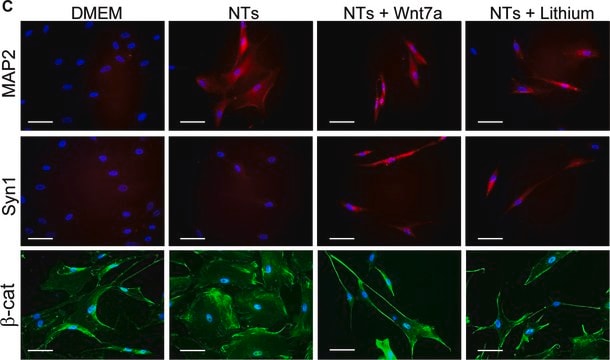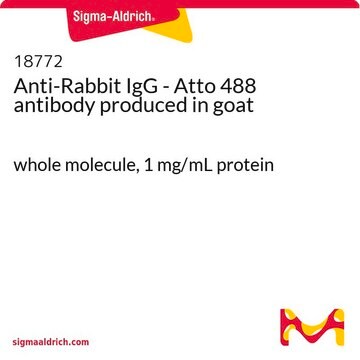S193
Anti-Synapsin I antibody produced in rabbit
affinity isolated antibody, lyophilized powder
Synonym(s):
Anti-EPILX, Anti-MRX50, Anti-SYN1a, Anti-SYN1b, Anti-SYNI
About This Item
Recommended Products
biological source
rabbit
Quality Level
conjugate
unconjugated
antibody form
affinity isolated antibody
antibody product type
primary antibodies
clone
polyclonal
form
lyophilized powder
mol wt
antigen ~80 kDa (Synapsin Ia)
species reactivity
rat, mouse, human, bovine
technique(s)
dot blot: 1:1000
immunohistochemistry (frozen sections): 1:2000
immunoprecipitation (IP): 1 μg
indirect immunofluorescence: 1:2000
western blot: 1:1000
UniProt accession no.
storage temp.
−20°C
target post-translational modification
unmodified
Gene Information
human ... SYN1(6853)
mouse ... Syn1(20964)
rat ... Syn1(24949)
Related Categories
General description
Immunogen
Application
- Western Blotting (1 paper)
- immunohistochemistry
- immunoblotting
- immunoprecipitation
- ELISA.
Rabbit polyclonal anti-Synapsin I antibody can be used for the localization and detection of synapsin I (synapsins Ia and Ib, approximately 80 kDa and 77 kDa, are collectively referred to as synapsin I) in nerve terminals.
Biochem/physiol Actions
Physical form
Disclaimer
Not finding the right product?
Try our Product Selector Tool.
Storage Class Code
13 - Non Combustible Solids
WGK
WGK 2
Flash Point(F)
Not applicable
Flash Point(C)
Not applicable
Personal Protective Equipment
Certificates of Analysis (COA)
Search for Certificates of Analysis (COA) by entering the products Lot/Batch Number. Lot and Batch Numbers can be found on a product’s label following the words ‘Lot’ or ‘Batch’.
Already Own This Product?
Find documentation for the products that you have recently purchased in the Document Library.
Customers Also Viewed
Our team of scientists has experience in all areas of research including Life Science, Material Science, Chemical Synthesis, Chromatography, Analytical and many others.
Contact Technical Service













